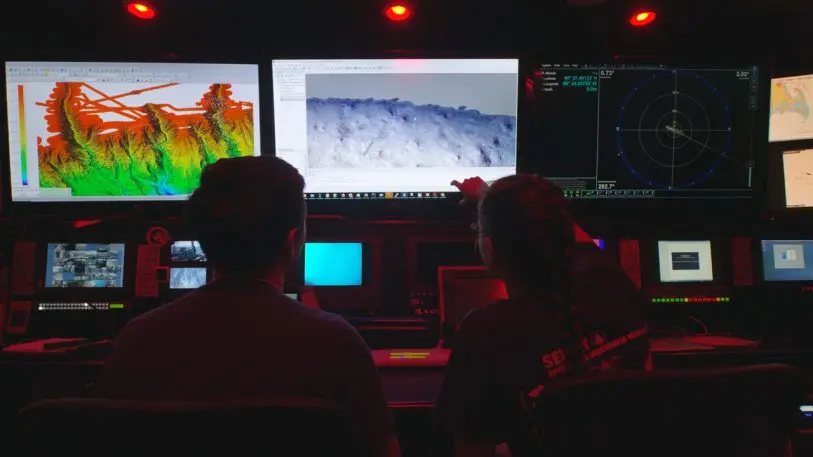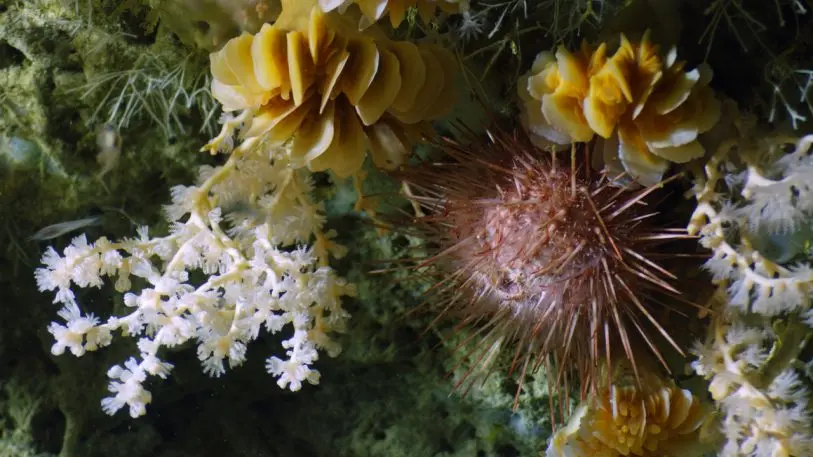The Northeast Canyons and Seamounts National Monument consists of nearly 5,000 square miles of federally protected Atlantic Ocean habitat. Created during the Obama administration, it’s located roughly 130 miles off the coast of Massachusetts near the continental shelf. The preserve is home to whales and turtles, and one of the few spots around the world with a deep-water coral reef that may prove more resilient than others to the effects of climate change.
That makes the area vitally important to the ocean’s future: Reefs cover less than 1% of the entire are of the ocean, but are home to 25% of all life there. This one might hold lessons in how to help others that are being destroyed, or eventually repopulate them. But not everyone is compelled by that. A Maine lobster group has sued to resume fishing there, and the area made the short list of Trump-targeted spots that could be reopened for industry or development.

So Bloomberg Philanthropies and OceanX, a marine exploration and storytelling initiative from Dalio Philanthropies, recently undertook a unique mission to explore and document life below the surface in that area. That mission has become part of a four-year, $185 million joint effort to increase research, education, and public awareness about the importance of our oceans. “The threat to oceans is huge and there’s a real unmet need in terms of philanthropic investment in oceans,” says Antha Williams, Bloomberg’s head of environmental programs. “They cover 70% of the surface of the earth and they provide half the oxygen that we breathe… They regulate the weather and they’re a major sink for carbon emissions.”
The dive hinged on the capabilities of the Alucia, OceanX’s specially outfitted ocean vessel, which includes two submersibles that can go 1,000 meters deep. As the video below shows, the initial voyage turned up incredibly breathtaking samples and images.
“These are roughly 90 canyons, some of which are as big, if not bigger than the Grand Canyon,” says Gretchen Wagner, the chief operating officer at Dalio Philanthropies. “What we found in some of these canyons was unbelievable biodiversity and corals. And so part of this is bringing back even the knowledge of what exists to people globally so that they can understand the importance of these marine environments.”
The organizations are still figuring out exactly how to share the footage and information about the specimens the mission recovered, but OceanX has turned similar work into popular programming for the BBC and other groups. This time, the Alucia had members of Woods Hole Oceanographic Institution and National Geographic aboard.
For Bloomberg, this initiative lines up with a growing strategy around ocean protection. The group began its sea-based efforts in 2013 after deciding that ocean protection was crucial to its core mission of ensuring better, longer lives for the greatest number of people possible. “When we came into oceans, we really started our work on overfishing with the idea that we really need to save fish populations so that we have that healthy sources of animal protein and livelihoods for people to eat,” Williams says.

To that end, the Northeast Canyons and Seamounts National Monument is part of a shortlist of places that Bloomberg has identified as in need of protection, and more public support and understanding. “The oceans are big and vast,” Williams says, noting that 95% of the world’s waters remain unexplored. “But we actually don’t need to go everywhere to solve some of the most urgent problems.”
Recognize your brand’s excellence by applying to this year’s Brands That Matter Awards before the early-rate deadline, May 3.
